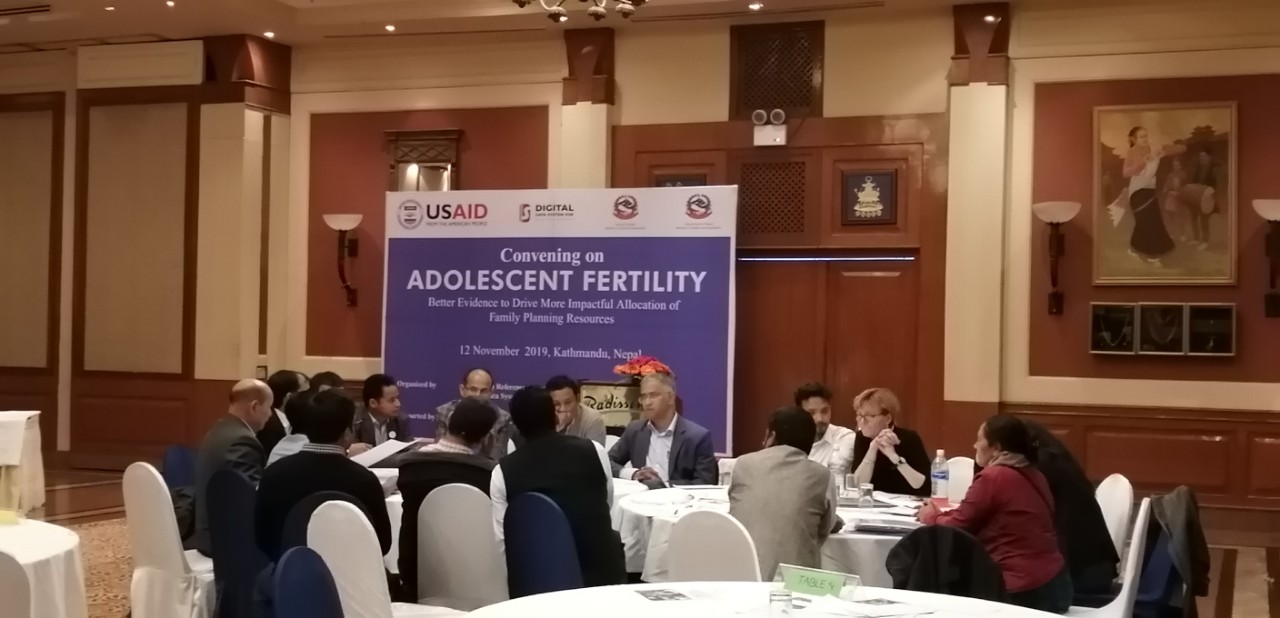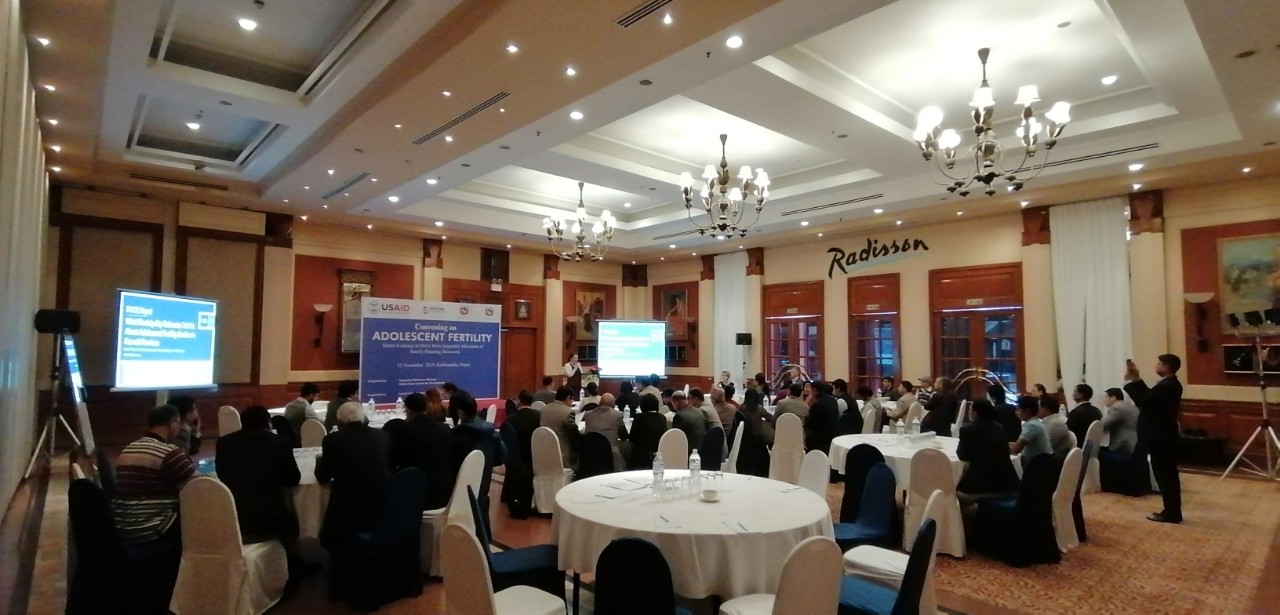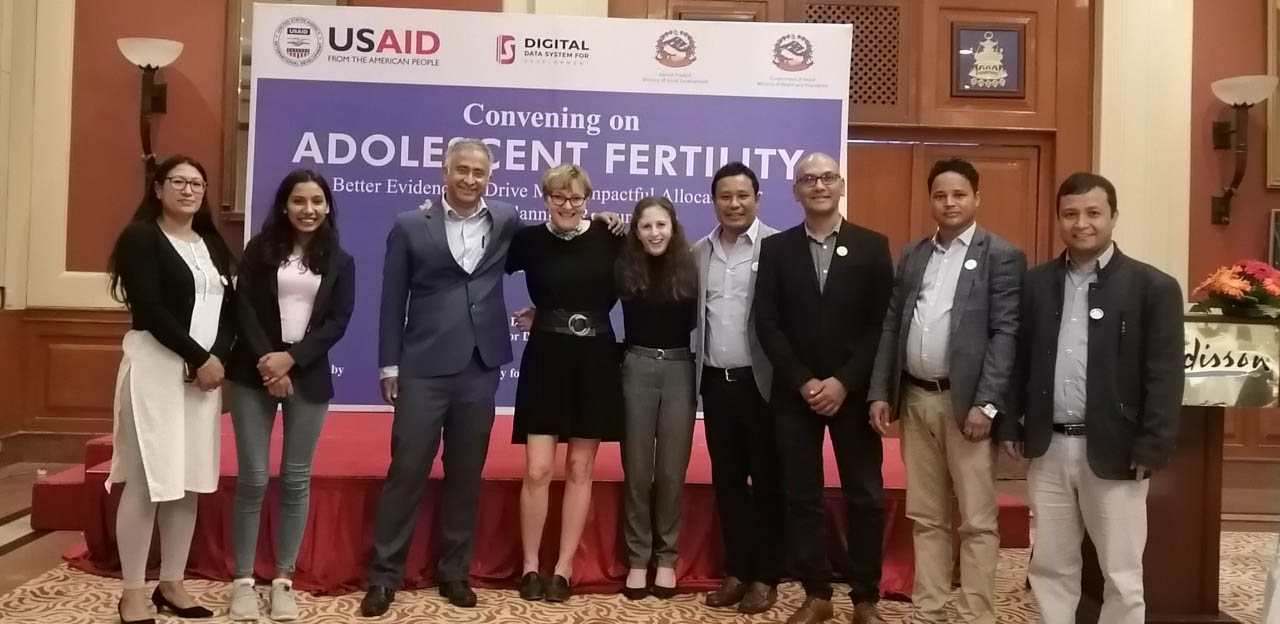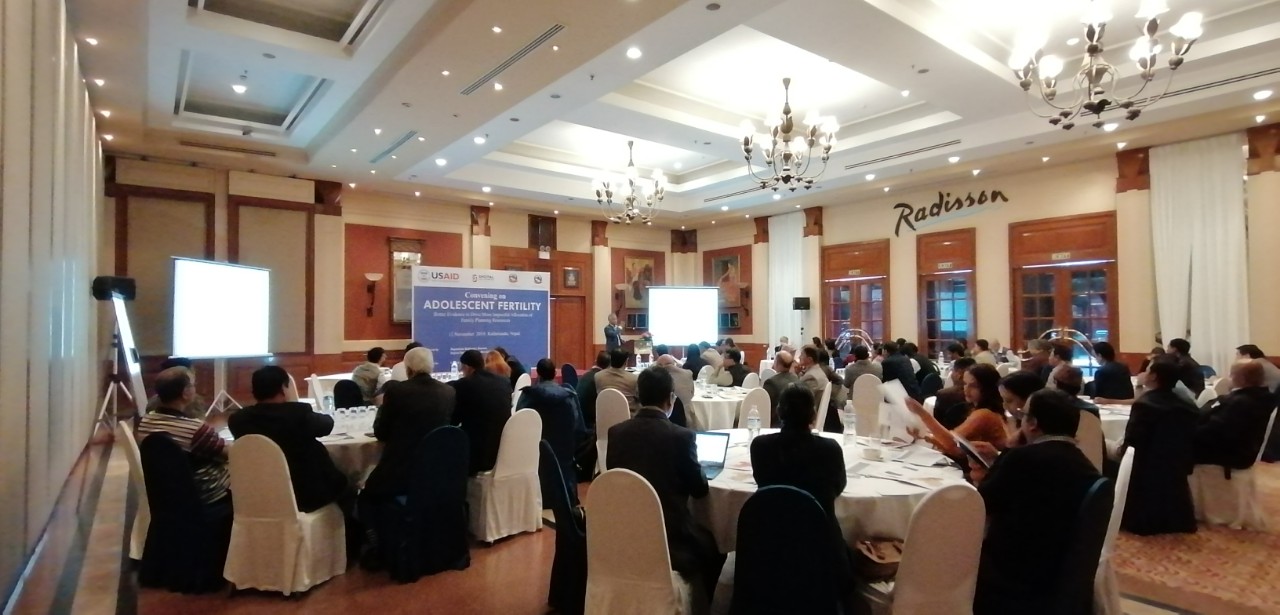Convening on adolescent fertility in Karnali Province municipalities
12th November 2019
Hotel Radission, Lazmipat
National averages and standard measures mask the complexity of family planning and fertility dynamics in Nepal. With a Total Fertility Rate (TFR) approaching replacement levels, one could conclude the family planning needs of Nepali men and women are close to being met. This presentation takes a closer look at a fertility rates and changes among an important subgroup, adolescents between the ages of 15 and 19. The health and opportunity costs of adolescent childbearing are well documented. The presentation shares estimates of adolescent fertility for 2016 for 79 municipalities in Karnali Province. Over the period 2011 to 2016, most municipalities in Karnali province experienced declines in adolescent fertility. However, in a small number of municipalities adolescent fertility remained high and relatively unchanged over the time period. The results shared here provide ministry and municipal authorities, development partners and advocates seeking to reduce adolescent childbearing with new information to better understand adolescent fertility dynamics in the province and to better target program responses, including family planning efforts. The purpose of the November 12 convening is to identify ways in which municipal estimates of recent adolescent fertility change may be improved prior to expanding the analysis to all 753 municipalities in Nepal.
The results shared here were prepared by the USAID-funded Policy, Advocacy and Communications Enhanced for Population and Reproductive Health (PACE) project. Dr. Samir KC conducted the analysis, which builds on his contributions to the national task force on ‘Human Resources Projection”. Mr. Rajan Man Bajracharya and Mr. Hari Krishna Dhonju of Digital Data System for Development designed the maps used in the presentation. Dr. Toshiko Kaneda, Ms. Barbara Seligman and Ms. Charlotte Greenbaum of Population Reference Bureau contributed to the demographic analysis and developed the materials that were shared on November 12.




<<Back